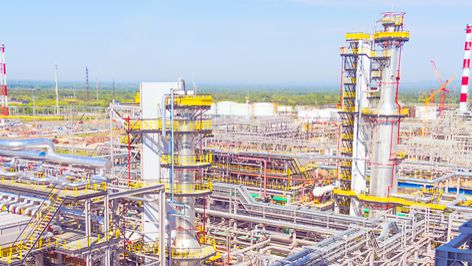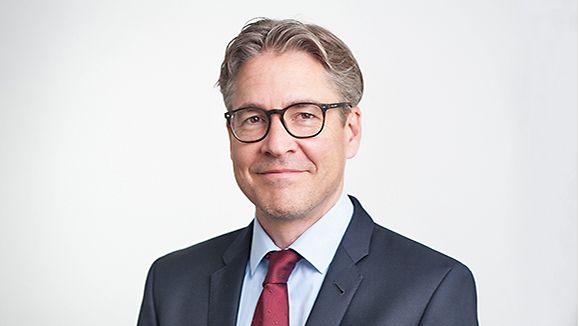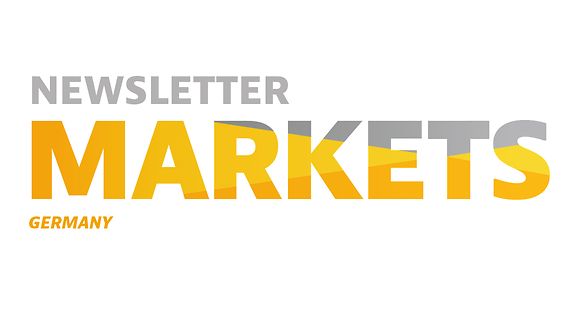chemical industry revenue in Germany in 2023
Your company is already operating in Germany and you would now like to export worldwide?
Key Facts
Chemical Industry Facts & Figures
Europe’s Largest Market
When it comes to chemical production locations, Germany is a global heavyweight – ranking first in Europe. With 2023 turnover of EUR 218 billion, the German chemical industry played a leading role in Europe, generating almost one third of total EU-27 sales of EUR 655 billion. Germany has occupied the world number four spot in global chemical revenue ranking for a number of years, being surpassed only by China (EUR 2,390 billion), the US (EUR 606 billion) and Japan (EUR 227 billion) in 2023.
Strong Export Market
The historical export strength of the German chemical industry remained unaffected by the different developments experienced in the sector. In 2023, Germany was the world’s third largest exporter of chemical products. Export market value of EUR 142 billion helped account for global market share of around nine percent – being surpassed only by China (EUR 197 billion) and the US (EUR 152 billion) respectively.
Europe’s FDI leader
Since the economic downturn in 2020/2021, increasing investment activities can also be seen in the mature European market. The main driver for these investments, in contrast to the investments in new plants in China, is ensuring the global competitiveness of the respective facilities. This is why so many investments involve bringing the technology up to date. Investment levels within Europe were comparable to the size of the respective markets. As such, most investment for the period 2019 to 2023 occurred in Germany, followed by Turkey, Spain and Spain.
Stable SME Environment
There were around 2,100 chemical companies in Germany in 2023 – of which 91 percent were SMEs with 500 employees or less. The country’s globally renowned and highly innovative Mittelstand of SMEs makes up the backbone of the chemical industry. It generates around 40 percent of revenue with approximately 40 percent of the workforce.
Workforce and Unique Training System
Germany's chemical industry has a highly trained workforce of around 350,000 employees. A unique training system provides the industry with skilled workers according to the company's needs via the vocational or “dual” training system. This enables young employees to specialize in chemical laboratory work, product development or production from the age of 16 years onward.
Research and Development, Patents
Approximately 23,000 employees work in the German chemical industrial R&D units. Annual industry R&D expenditure amounted to EUR 5.5 billion in 2022. The combined efforts of Germany’s research strategy and applied research have allowed the country to consolidate its number three spot for European chemical patent registrations with 13 percent – only behind the US (27 percent) and Japan (14 percent).
Opportunities
Client Industry Markets
One of the largest contributors to the industry’s success in Germany is the presence of strong client industries. These include the construction and packaging industry and the automotive sector with turnover of more than EUR 560 billion in 2023. This existing industrial base also guarantees participation in new growth segments including new mobility models and semiconductors. The realization of the necessary investment projects is made possible by the unique chemical parks in Germany that enable competitive production costs in Europe.
Growth Segment: e-Mobility
The current most interesting growth market for the chemical industry is the mobility shift towards battery electric vehicles (BEVs) underpinned in the EU Green Deal. In Germany alone, around 1.5 million BEVs were newly registered in 2023 – half a million more than in the previous year. However, this only accounted for 18 percent of all new vehicle registrations. Even with these strong growth figures, the BEV stock in Germany was only around three percent of the total stock of around 50 million vehicles in 2023. There is an enormous growth market for the chemical industry with the federal government's plan to increase the stock of BEVs to 15 million by 2030. The chemical industry supplies various anode and cathode materials as well as electrolytes, adhesives and plastics for cell production. In contrast to the internal combustion engine, BEVs open up another equally lucrative growth market for the chemical industry. Batteries that have reached their end of life can be recycled using chemical processes to recover valuable metals.
Growth Segment: Semiconductors
Between 2012 and 2021, global semiconductor industry turnover increased from USD 300 billion to USD 583.5 billion. Germany is the beating heart of the European semiconductor industry, ranking among the world’s top semiconductor production locations. The country boasts an unparalleled density of world-leading device manufacturers and suppliers for materials, components, and equipment across the entire value chain. Germany wants the European chip industry to invest up to EUR 50 billion in semiconductor production to establish European digital sovereignty and is already home to over half of all new EU microchip projects. This creates an enormous market for the chemical industry as the semiconductor industry requires around 60 different chemicals in large quantities with high purity requirements. These processes enable the chemical industry in Germany to achieve high margins.
Business Environment
Chemical Parks: Plug & Play Production Concept at Competitive Cost
Cost-competitive production through flexible site operators
Chemical parks offer a wide range of business models. Subject to the investor’s individual requirements, land can be leased or purchased in order to establish a production unit. At the other end of the scale, a site operator invests in and operates the new plant for the investor on a custom or toll manufacturing basis.
Fast implementation of the new businesses
Investors are supported by a number of investment planning and construction services. The most sought-after service is for permit applications. Licensing procedures are completed quickly and efficiently with the competent public authorities assisting in the process from a very early stage.
All chemical services available on-site
Services including wastewater treatment, thermal treatment of production residue, emergency services, industrial safety, fire protection, environmental services, analysis and testing services, rail dispatching, and product storage are all widely available at chemical parks.
Chemical infrastructure and pipeline network
Crude oil – the major chemical source of carbon –is distributed by an advanced network of pipelines. Twelve refineries (with a total capacity of around 100 million tons per year – equivalent to three percent of global capacity) and eight steam crackers supply Germany’s chemical industry with all of the necessary building blocks. Of the 145 million tons of chemicals transported annually in Germany, 36 percent are transported by pipeline. Major chemical sites are interconnected through pipelines that transport raw materials such as ethylene within the country and via Belgium and the Netherlands to neighboring chemical production centers and Europe’s northwestern seaports. There are also hydrogen, carbon monoxide and oxygen pipelines between chemical parks with a specialized production focus.
Energy security – low power outages
Security of power supply is very high by international standards. In marked contrast to the US and other countries in Europe where major blackouts are recurrent, power outages are most definitely the exception in Germany. The average amount of time lost to blackouts in the US is nearly four hours per year and in Spain two hours per year. Italy and the UK suffer from outages of around 80 minutes per year. These all exceed the German average of just 40 minutes per year.
News
Media Library
Investments in the Chemical Industry in Germany
The European chemical industry’s declining share in the world market might seem alarming. However, sustained and significant investment activity in Germany signals a high level of global competitiveness – with basic chemicals surprisingly continuing to play a major role. Here you will find selected published investment activities in chemical industry production facilities in Germany.
M&A Deals - German Chemical Companies
After several years of excellent business, chemical companies are seeking non-cyclical growth segments. M&A activities - primarily in the small-volume specialty chemicals sector - have slowly altered the characteristics of the production landscape in the highly industrialized regions. Below please find selected M&A transactions carried out by German chemical companies to sharpen their portfolios.




